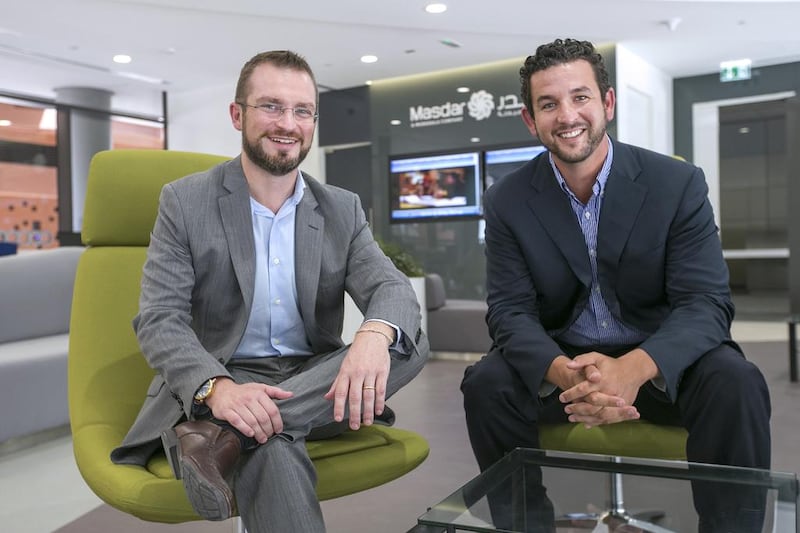Jourdan Younis left his job in Abu Dhabi two-and-a-half years ago to set up his own company that provides green building consultancy services in the UAE. The 31-year-old from California is the managing director of Masdar-based Alpin. He says the demand for green buildings is growing enough to keep the start-up busy and expand. Mike Pidgeon, Alpin’s head of sustainability, and Mr Younis talk about the market in the region.
What made you start such a company in the UAE?
Jourdan Younis I came to Dubai in 2008 to work on a large sustainability project in Jumeirah Garden City [plans for which were changed after the global financial crisis]. I was working for a large British engineering company, and I felt something was missing in the market. With Alpin, we try to bring new technologies from the US and Canada and try to implement them here. We try the technology first on pilot projects. It also allows us to do more work with fewer people.
What was the initial investment?
JY: My severance money from the company I was working for was sizeable. I invested around $100,000 and didn't take a salary for a year. The first year, we had two people and now we have 15. However, we have consultants from Australia to California. We used to be housed in a container in Masdar, around 10 square metres. Now, we have three offices – in Vienna, Abu Dhabi and Dubai.
How challenging was it to convince clients when you started?
JY: We thought we had five confirmed clients when we started, but they all fell through. It was a challenging first few months. But we managed to get traction. During the first year, we had 21 projects, 32 in the second and we have around 40 in the third year. We got them through word of mouth and through teaching private courses at universities in the UAE.
What are your revenues now?
JY: We are projected at US$2 million for this year. We did approximately $1m last year, and $250,000 in 2012. We compete with the big guys in this field but our overheads are lower because of our size. We want to enter Qatar next year. In the first quarter we started a new business unit on virtual design management, which would help to give substantial savings for the clients.
Construction slowed down considerably during the global crisis. How did the green buildings segment do?
JY: Throughout the crisis in the UAE, green buildings did not suffer. We do not have projects in Dubai, but in Abu Dhabi because of its Estidama [which means sustainability in Arabic] ratings system for not only new buildings but operational ones as well, the market is growing. The programme was launched in 2010.
How is the overall market for green market?JY: There is a wave of operating buildings being converted to green buildings. In Abu Dhabi, key clients are going for lead operations because it's the new thing and it's a matter of prestige. Schools are the ones which are most into green buildings, and includes the private schools, because lighting is better, ventilation is proper, there's more fresh air and good acoustics.
What are the challenges you are facing?
JY: There are not really any challenges for the sector, but for us it is how to attract the best talent. Also, managing cash. Here the payment cycle is late compared with the US. You need to have at least a year's operating cash to cushion yourself.
What kind of clients do you have?
Mike Pidgeon: Almost half our clients are design stage clients and the rest are in the construction side.
JY: Some of our clients include Pepsi, Johnson Controls, Kizad, Al Hilal Bank, Abu Dhabi Future Schools Program, Emirates Leisure Retail, Qatar Rail, Qatar Museum Authority, [Abu Dhabi] Midfield Terminal and a few confidential military and financial entities.
How different are the designs of green buildings from the standard ones?
MP: Just by changing the orientation of the building you can have 20 to 30 per cent of savings on cooling costs. By considering the sun path, you can work out the best place to have shading and glazing of the building.
ssahoo@thenational.ae
Follow The National's Business section on Twitter





